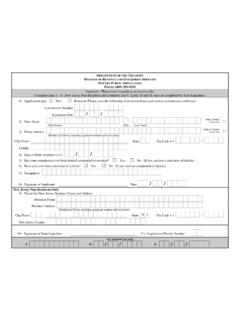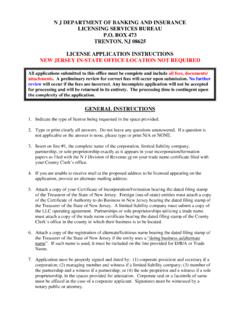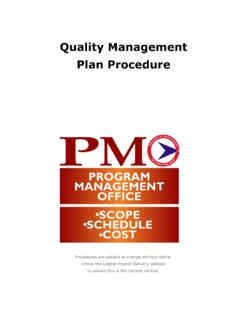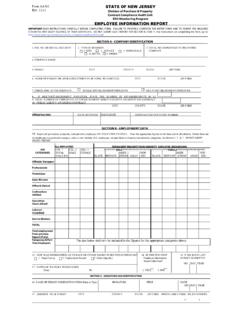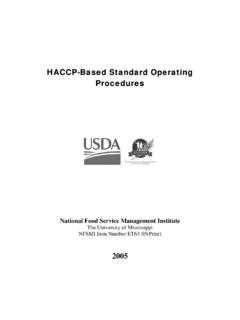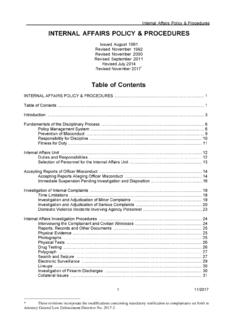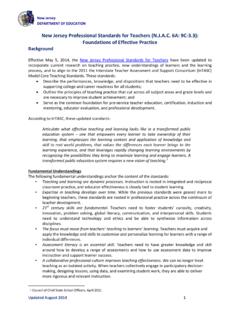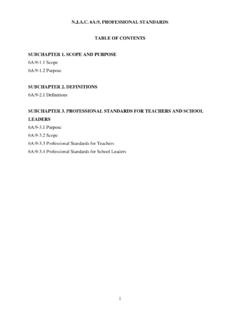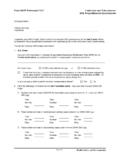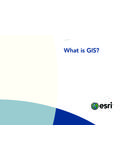Transcription of Pharmaceutical Waste Compliance For Healthcare …
1 Pharmaceutical WasteComplianceFor Healthcare FacilitiesRegulations & ReferencesThe information provided in this presentation is based on thereferenced Code of Federal Regulations and State regulations. Thisdata is presented only as a reference. For complete requirements orlegal counsel on hazardous Waste regulations and interpretations,generators should consult their legal department, the applicableCode of Federal Regulations and applicable State Waste Management Issues & Concerns surrounding RX Waste Federal and State Regulations Regulatory & Industry Issues Defining Pharmaceutical Waste Implementing a Pharmaceutical Waste ProgramPresentation ObjectivesLaboratory Solvents.
2 Xylene, Alcohol, Clear Rite PAP Smear Kits Formalin Reagents Test Kits Cleaning Supplies Hand Sanitizers pH Adjusters Picric Acid Ictotest/Clinitest/ Acetest Tablets Equipment Discharge Stains/Staining Lines ThermometersHospital Regulated Waste StreamsMaintenance Paint Shop Solvent Based Paint Aerosol/Spray Paint Paint Thinners RagsMaintenance Shop Oil Related Materials Aerosols Solvents Grease/Degreaser Boiler Chemicals Batteries/Light BulbsWoodworking Shop Varnishes Wood Stains SolventsGroundskeeping PesticidesHospital Regulated Waste StreamsHousekeeping Hand Sanitizers Cleaning Supplies Aerosols Fluorescent Light Bulbs
3 Batteries Electronics & Electronic EquipmentHospital Regulated Waste StreamsUSGS (US Geological Survey) Water Survey (1999-2000) Organic wastewater Contaminants (OWCs) in 80% of streams tested 33% of OWCs detected were pharmaceuticals in Minn. aloneMedia Coverage 3/9/08 USA Today - AP Probe finds drugs in drinking water 9/15/08 USA Today/AP - Hospitals dumping drugs into water 5/24/10 Modern Healthcare - Drugged EPA Regulatory Activity Notice of Violations and warnings Increasing regulatory scrutiny nationwide Fines in excess of $450,000 ($37,500 per day per occurrence)A Growing Focus on Rx WasteUnderstanding the Issues Do you know what is considered pharmaceuticalwaste?
4 Is your facility properly identifying, segregatingand disposing of Pharmaceutical Waste ? Does your facility manage the disposal processinternally or use outside resources? What laws, regulations and Joint CommissionStandards apply to Pharmaceutical Waste ?Hospitals Without Any Program Mix of Waste disposal from solid Waste , collection and segregation, all hazardous Waste , red bag, and flushing Capturing trace chemo; sometimes have a bulk chemo program With a Rudimentary Program Internally Managed Capturing trace and bulk chemo Capturing P listed Waste in the pharmacy (disposable containers) No program outside of pharmacyWhile most hospitals that believe they re in Compliance by capturing listed wastes, they typically are not familiar with nor collecting characteristically hazardous Waste , not segregating incompatible hazardous wastes nor is the program facility wideCurrent State of Rx Programs US Environmental Protection Agency Resource Conservation and Recovery Act of 1976 (RCRA)
5 Clean Water Act of 1972 (CWA) US Department of Transportation (DOT) Drug Enforcement Agency (DEA) Occupational Safety & Health (OSHA) The Joint Commission (TJC) State Regulatory Agencies (EPA & DOT) Publicly Owned Treatment Works (POTW)Rx Waste Disposal:Who is Involved? Hazardous Waste determinations not done or incorrect Labeling of hazardous Waste not done or incorrect Throwing hazardous Waste down the drain Improper disposal of chemotherapy drugs Inadequate training for employees in HW management Not conducting proper weekly inspections of HW storage No or inadequate HW manifests Lack of emergency contingency plan Improper management of expired pharmaceuticals Identification and Management of Regulated Hazardous Waste EPA Region 2 Common EPA Inspection IssuesLarge Quantity Generator Hazardous Waste Generator > = 1000 kg/mo of non-acute hazardous Waste >= 1
6 Kg/mo acute hazardous Waste (P-Listed)Small Quantity Generator Hazardous Waste Generator *Between 100 kg and 1000 kg/mo of non-acute hazardous Waste < 1 kg/mo of acute hazardous Waste (P-Listed)CESQG Conditionally Exempt Small Quantity Generator< or = 100 kg/mo of non-acute hazardous Waste < 1 kg/mo of acute hazardous Waste (P-Listed)* SQG status must be verified & documented monthly EPA Waste Generator StatusDetermining Generator StatusREQUIREMENTSQGLQGH azardous Waste identificationYesYesEPA ID numberYesYesRCRA trainingYesYesException reportingYesYesHazardous Waste storage YesYesWeekly inspectionsYesYesManifest useYesYesEmergency coordinatorYesYesEmergency response planningYesYesContingency planNoYesBiennial reportingNoYes SQG status requires measurement and documentation that monthlyacute hazardous (P Listed ) Waste volume does not exceed 1 kg ( lbs)
7 EPA Waste Generator Requirements Proper management of all pharmaceuticals which are considered controlled substances These pharmaceuticals are neverconsidered a Waste by the DEA and must be managed appropriately to avoid diversion and for final destruction Hospital/entity which is a DEA registrant must be responsible for proper inventory trackingControlled Substances & the DEAC lean Water Act (40 CFR Parts 122 and 403) A sewer connected to a publicly owned treatment works (POTW) is regulated by Federal, State, and POTW issued permits Pollutants include sewage, chemical wastes ( pharmaceuticals)and biological materials EPA notification requirement for sewer discharge of RCRA hazardouswasteRx Waste Sewer Disposal Management of materials being flushed or poured down the drain Restrictions on types of chemicals (including pharmaceuticals), blood and other materials Mostly managed locally Bound by Federal EPA standards under Water Division and often further regulated by State regulatory agenciesPOTW: Publicly Owned Treatment WorksDOT regulations (49 CFR):1.
8 Classification, description, and packaging 2. Proper marking and labeling 3. Segregation into proper streams4. Training5. Security Hazmat Implementation Act: Fine section rewritten to raise fines Average fine is $30,000 per violation and range up to $100,000 DOT HM229 If a generator ships hazmat without proper documentation the carrier must report it or the carrier can be prosecuted with the shipper. DOT - Medication Management The hospital safely manages high-alert and hazardous medications The hospital identifies, in writing, high-alert and hazardous medications The hospital has a process in place that addresses how outside resources, if any, are used for the destruction of - Environment of Care The hospital manages its hazardous materials wastes risks.
9 The hospital minimizes risk associated with disposing of hazardous - Leadership The hospital complies with law and Accreditation Do you know what is considered pharmaceuticalwaste ? Is all Pharmaceutical Waste either P- or U-listed?What is Pharmaceutical Waste ? Pharmaceutical Waste consists of any Pharmaceutical that is: No longer used for its intended purpose Not returnable for credit Designated for discardExamples Partial vials (safety caps removed) Un-dispensed Pre-instilled IVs Hospital repacks Pre-filled syringes Partial syringes Discontinued meds Un-administered meds Patient prescriptions Physician RX samplesThe Basics of Pharmaceutical Waste What is Waste Characterization?
10 Identification of hazardous Waste per EPA/RCRA regulations What is characterized? Active AND inactive ingredients, including preservatives What about DOT regulations?Determine DOT hazardous material class at NDC/item level Other concerns?NIOSH and OSHA best practices re: non-EPA evaluated dangerous drugs (TJC monitored) NOTE: Material Safety Data Sheets do not always provide data on inactive or preservative ingredientsWaste CharacterizationListed Waste (Commercial Chemical) P Listed (Acutely Hazardous) Coumadin/warfarin, Nicotine, Physostigmine, Arsenic Trioxide, epinephrine*, nitroglycerin* U Listed (Toxic) - Chemotherapy drugs*Federal exemptions requires state adoption of US EPA interpretations ( epinephrine salts and medicinal nitroglycerin)Characteristic Waste Ignitable, Corrosive, Reactive, ToxicIncompatible WasteIn addition to the two RCRA defined hazardous Waste categories (Listed & Characteristic)
